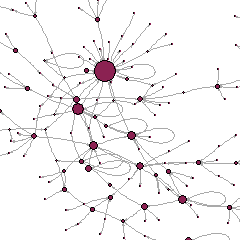I have just discovered this very interesting new paper by Otto Kässi, Vili Lehdonvirta and Fabian Stephany. Their data-driven count of online workers is not without reminding of this research published last year, which I did with Clément Le Ludec and Antonio A. Casilli.
There are differences of course: theirs is a large multi-country study while we focused on one national setting (France). Also: Kässi et al. consider online labour in general, while we looked specifically at micro-work.
Nevertheless, there are striking similarities. Both studies included larger as well as smaller and more peripheral platforms, often left aside in previous research. Both started from the numbers of registered users declared by the platforms in scope, although this is likely an upper bound. Indeed registering may not mean using, and for example researchers (like ourselves) and journalists would register only to observe, especially when registration is open and easy.
Also, both studies used web traffic analysis data but for different purposes. We used them as an estimate of minimally active users – those who connect at least monthly, as per the definition given by the providers of these data. For the platforms we observed, these numbers tend to be lower than registrations.
Instead, Kässi et al. have used these data to assess registration numbers for the platforms that do not report them. My first reaction would be to think their estimates are likely a lower bound. But presumably their use of a mix of sources, and the seriousness and caution with which they have conducted their estimate, provide enough correction.
Finally, both studies attempted to correct estimates downward by taking into account multi-homing – the tendency of users to rely on multiple platforms. The coefficient of Kässi et al. is 1.83, ours was 1.27. The gap is due to the fact that we focused only on micro-work: if we had counted participation across all types of online labour platforms, our coefficient would be just below 2 – not far from theirs! Kässi et al. also correct for the possibility of multiple workers using a single account, which we did not observe in our French sample. One might imagine other corrections depending on observed usages. For example my ongoing Latin American study of micro-workers suggests that there are unofficial sales and purchases of highly rated platform accounts, more likely to access better-paying tasks – again, something we did not observe in France. Kässi et al. rightly note that all these corrections come from ad hoc surveys and should be interpreted with caution.
Overall, I would say that both studies point to the need to put in place new and creative methods to account for these new forms of labour that traditional statistical studies fail to capture well. The price to pay, as both studies stress, is a high degree of uncertainty. I also dare suggest that both are mixed-method studies: while the design is essentially quantitative, input from smaller and even qualitative research is crucial – for example to get insight into multi-homing and multi-working.
Before concluding, let us recall the key results. Kässi et al. reckon that there are 163 million freelancer profiles registered on online labour platforms globally, of whom approximately 19 million have worked at least once, and 5 million work more intensely. We estimated that approximately 260,000 French residents are registered with micro-work platforms, of whom some 50,000 are ‘regular’ workers who do micro-tasks at least monthly, and a more restrictive measure of ‘very active’ workers would decrease this figure to 15,000.
Are these numbers large or small? Curiously, our French study attracted both criticisms: some worried that we might be overstating the importance of micro-work, others wondered why we bothered for such a tiny part of national GDP. It is not easy to answer this question, as the answer depends on the perspective taken and the goals – the same numbers would mean different things to policymakers and researchers, for example. Nevertheless, I think that the point that is important to all, is to say that this population exists and needs attention – despite its limited visibility and the fuzzy boundaries that make it so difficult to assess its size.
